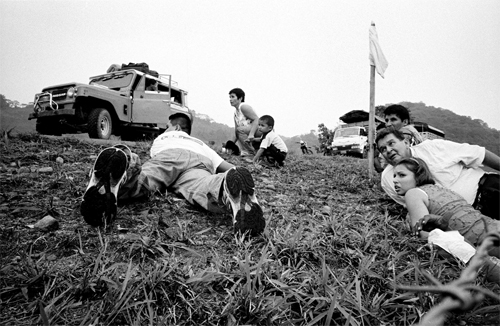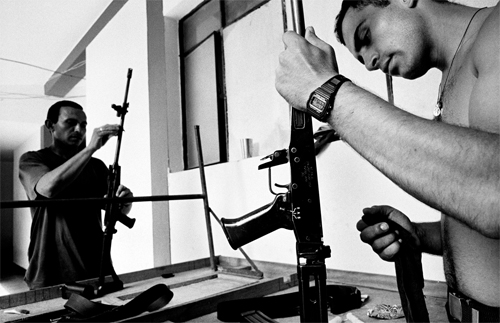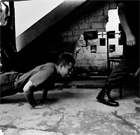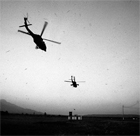| |
Like a black veil of mourning that is worn too long, the scourges of Colombia’s of civil war, drug trafficking and political corruption hides a beauty so rarely glimpsed that it is almost forgotten.
In terms of beauty, Colombia is a true contender, blessed with lush Amazonian rain forest and jungle, snow capped mountain ranges, palm- fringed white sand beaches and clear water stretching away on both its Caribbean and Pacific coasts. Apart from its diversity of cultures, Colombia’s natural resources produce coffee, coal, oil and some of the world’s finest emeralds. The people are amongst the most friendly and hospitable in the world.
However, Colombia also is a strong contender for having the longest running conflict and the largest internally displaced population. According to UNHCR only Sudan has a higher number of internal refugees. The 45 year long ‘civil’ war has claimed the lives of tens of thousands and forced over 3 million people to flee their homes in order to escape the violence.
Colombia’s troubles are rooted in social inequality. As in many countries a greedy, power-hungry corrupt minority control the lion’s share of all the land and resources. This control allows them to grow richer whilst at the bottom of the social ladder, the poor remain as poor as ever. Such essentials as clean water, sufficient food, access to affordable health care and education are luxuries the poor can only dream of.
The land on which they were born and raised is now a carcass being fought over by a pack of wild animals. On the left is the FARC (Revolutionary Armed Forces of Colombia) a 20,000-strong rebel army, originally formed by communists who survived a series of purges during a period known as ‘La Violencia’. These rebels claim to fight for and represent the downtrodden masses. Funded by taxation of the illegal trade in cocaine and a kidnapping and extortion network, they are wealthy and well armed. FARC is one of the oldest insurgent groups in the world, but like all organisations their politics and motivations have evolved with time; today few observers believe any longer that FARC offers anything more than a power trip for its leaders, and a life of hard graft and a shallow grave for the foot soldiers they recruit.
FARC itself faces a fearsome enemy - the right wing paramilitaries. The origins of these militias can be traced back to their formation as a self defence force for wealthy land and plantation owners. When FARC began demanding a ‘war tax’ from the rich, kidnapping anyone who refused to comply, these self-defence forces were created to fight back and defend these interests. They received training, intelligence and financial assistance from the Government’s armed forces. They too evolved rapidly, becoming the government’s unofficial ‘problem solvers’. They targetted the rebels and their supporters, torturing and killing any suspected of having connections to rebel groups, including trade unionists, political activists and students. They also sought to wrest control of the ever-growing cocaine trade from FARC.
With billions of dollars a year to be made from producing and trafficking drugs the lost lives of the innocent who happen wander into the crossfire are described as collateral damage just like the civilians who die under airstrikes during other illegal wars in various oil rich parts of the world.
The Government continues to battle the rebels and at least in public, has distanced itself from the paramilitaries. First they made such militias illegal, and then began a process of disarming and disbanding. This programme has since dissolved into farce. Over the last few years nearly double the number of fighters previously claimed to be on the payroll have handed in their weapons at public ceremonies, and yet the fighting and killing continues unabated. It now looks as though the entire scheme was much more of a restructuring exercise than any honest attempt at eliminating the grip of such private armies. As various paramilitary leaders seek to escape the likelihood of extradition or prison sentences they point at senior figures within government or the military, whom they claim issued orders or provided support, causing scandal after scandal.
The war ebbs and flows and evolves constantly. Government forces, heavily subsidised by US military aid, have increased in size and efficiency, and have succeeded in regaining control over certain areas of the country. Still, in the remote jungles, grasslands and mountains, the rebels and paramilitaries still hold sway. They coerce many farmers into coca production, forcibly recruit fighters and extort businesses and companies operating within their respective areas of control.
Nonetheless, despite this coercion, many of the fighters in FARC and the paramilitaries join through choice. For some it is just a job, much like joining the regular armed forces. For others it is a chance to seek redress or revenge for the injustice they witness. Many of the recruits are teenagers, some as young as 14, who have seen their families killed by either FARC, paramilitary or government troops, and are spurred to join the opposing group.
To the poor, who have limited options, the offer of a uniform, gun, regular pay, food, security and a means to avenge injustice, can be hard to resist.
The gradual erosion of social norms begins very early in the towns and villages beseiged by this dirty war. Assassinations are frequent, and even full scale engagements take place as one side seeks to dislodge and seize control of territory. Few are spared the sights, sounds and sensations of war, the pain, grief and loss. Although fighting is the answer for some, the majority seek to distance themselves from danger. With scant resources, those fleeing often head for larger towns and cities to seek work, and end up moving into slums known as ‘misery belts’ that ring such conurbations. Others settle in displacement camps where various NGO’s try to assist them. However, because they are internally displaced and have not crossed the borders from neighbouring countries, they are not officially classified with refugee status.
Despite now representing one of the world’s greatest humanitarian disasters, the Colombia crisis receives very little attention and when it does, the media portray the issue as simply a war over drugs, rather than probing deeper into the deeper causes and effects of this devastating conflict.
When I began making the images for my book on Colombia it was not with a pure, selfless motive to educate others about Colombia. I was not a professional photographer at that time. I travelled to meet the FARC for my own benefit, as an exciting challenge, for an adventure and to learn how to be a photojournalist.

Well, I certainly got my adventure, but I also found that I had fallen in love with Colombia and its wonderfully hospitable and open people. I realised that criticism is often made from a position and by individuals far removed and insulated from the blood, sweat and tears of reality. In order to gain any kind of real understanding one has to be on the ground and immersed in the situation. I also realized that my initial idea of documenting life with the left wing militias was not going to be sufficient. I could not with a clear conscience tell the story of just one player in such a complicated power struggle. I therefore set out to learn about and photograph many different elements to give the broadest range of perspectives possible.
My knowledge grew quickly. The ideas and opinions I had about the groups involved in the conflict were poorly formed and went through radical changes as I met with them and learnt more about each faction. I spent months living in towns controlled by the FARC, and then in towns controlled by their enemies, the paramilitaries. I patrolled with the army, navy and police, went on raids with anti-narcotics units and watched campasinos grow coca and make cocaine. I got caught up in firefights and bomb attacks and discovered that a young woman I had become involved with was an assassin; she had killed dozens and was herself later to be murdered.
I met people who scared me, who made me feel safe, who made me want to stay and who made me want to leave. I met people who convinced me with words that Colombia has a bright future, and others who through their actions, made me feel that Colombia may never experience lasting peace.
Colombia has earned itself a very negative reputation, and the root causes of its tragic conflicts have yet to be addressed. Nevertheless, this dark veil should not be allowed to obscure all hope for a country whose vast majority of people are genuinely searching for peace. •

|
|




 |
|













